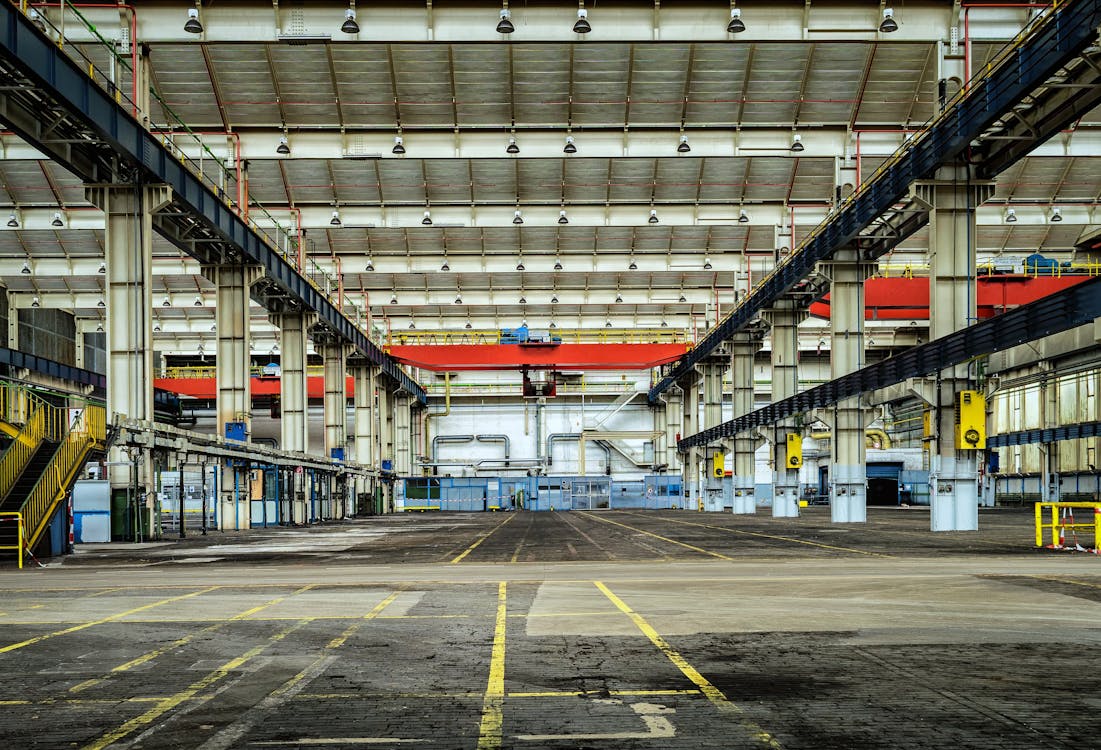Growing businesses often face a significant challenge: how to manage increasing inventory without compromising efficiency. As companies expand, so does the need for more storage space. However, finding smart warehouse storage solutions that optimize space, reduce costs, and improve operational efficiency is not always straightforward.
This guide explores innovative warehouse storage strategies tailored to the needs of growing businesses, helping you make informed decisions to support your company’s growth, with additional insights available at https://lenokers.com.
Investing in smart storage solutions can transform your warehouse operations, enabling your business to scale efficiently. Here are some strategies to consider:
1. Optimize Vertical Space

Most warehouses focus on floor space, but vertical space often remains underutilized. Implementing vertical storage solutions, such as pallet racking or automated storage and retrieval systems (AS/RS), allows businesses to store more inventory without expanding their warehouse footprint.
Pallet Racking: This is a versatile storage solution that can be customized to store different types of goods. By stacking pallets vertically, you maximize storage capacity while keeping items accessible.
- Automated Storage and Retrieval Systems (AS/RS): These systems use automated machines to store and retrieve items from high racks. AS/RS can significantly reduce the time spent on locating and picking products, improving overall efficiency.
2. Implement Inventory Management Software
An effective inventory management system is crucial for growing businesses. Modern software solutions provide real-time tracking of inventory levels, allowing you to optimize storage space and reduce excess stock.
- Real-Time Data: With real-time data, you can monitor inventory levels, track product movement, and forecast demand more accurately. This helps in reducing stockouts and overstock situations.
- Integration: Inventory management software can integrate with your warehouse management system (WMS) to streamline operations, from receiving goods to dispatching orders.
3. Use Modular Shelving Systems
Modular shelving is a flexible solution that can be easily adjusted as your inventory needs change. These systems allow you to customize the height, width, and depth of shelves to accommodate different product sizes.
- Adjustability: As your product range grows, you can reconfigure the shelves to store various items without needing additional storage units.
- Durability: Modular shelving is often made of sturdy materials that can handle heavy loads, ensuring longevity and reducing the need for frequent replacements. Additionally, businesses that require scalable storage solutions can benefit from commercial shelving, which offers durability and adaptability for high-volume inventory needs.
4. Lean Warehousing
Lean warehousing focuses on minimizing waste and maximizing efficiency. This approach involves analyzing and optimizing every aspect of your warehouse operations to eliminate inefficiencies.
- Just-In-Time (JIT) Inventory: By adopting a JIT approach, you can reduce the amount of inventory stored in your warehouse, freeing up space and reducing costs. This method requires close coordination with suppliers to ensure timely delivery of goods.
- Kaizen: The principle of continuous improvement, or Kaizen, encourages regular assessment and refinement of warehouse processes. Implementing Kaizen can lead to incremental improvements in storage efficiency over time.
5. Optimize Layout Design

- A well-designed warehouse layout is key to efficient operations. The layout should minimize the distance workers need to travel to pick items, reducing labor costs and speeding up order fulfillment.
Zoning: Divide your warehouse into zones based on product type, demand, or picking frequency. High-demand items should be stored in easily accessible locations, while slower-moving products can be placed in less accessible areas. - Flow Optimization: Design your layout to ensure a smooth flow of goods from receiving to storage, picking, and dispatch. This reduces bottlenecks and improves overall efficiency.
6. Invest in Automation
Automation can revolutionize warehouse operations, making them faster, more accurate, and more efficient. Automated solutions can range from conveyor systems to robots that handle picking and packing.
- Automated Guided Vehicles (AGVs): AGVs are robots that transport goods within the warehouse. They can move items from one location to another without human intervention, reducing labor costs and increasing accuracy.
- Robotic Picking Systems: These systems use robots to pick items from shelves and place them into bins for packing. Robotic picking systems are particularly useful in high-volume warehouses, where speed and accuracy are critical.
7. Implement Barcode and RFID Technology
Barcode and Radio Frequency Identification (RFID) technology are essential tools for tracking inventory in real-time. These technologies enhance accuracy, reduce errors, and improve the speed of operations.
- Barcode Scanning: Barcode scanners are widely used for tracking inventory movement. They provide real-time updates to your inventory management system, ensuring accurate stock levels.
- RFID: RFID tags allow for non-line-of-sight scanning, which means multiple items can be scanned simultaneously. RFID is especially useful for managing large inventories and reducing the time spent on manual counts.
8. Utilize Cross-Docking
Cross-docking is a logistics practice where incoming goods are immediately sorted and sent to their final destination without being stored in the warehouse. This method reduces storage needs and speeds up order fulfillment.
Reduced Handling: Since products spend less time in the warehouse, there’s less need for handling, reducing the risk of damage and labor costs.
Faster Delivery: Cross-docking allows for quicker delivery times, improving customer satisfaction and reducing the need for large storage spaces.
9. Focus on Safety and Compliance

As your warehouse grows, so do the risks associated with storage. Ensuring safety and compliance with regulations is critical to avoid accidents, injuries, and legal issues.
Regular Inspections: Conduct regular safety inspections to identify and address potential hazards, such as overloading shelves or obstructed pathways.
Training: Provide ongoing training for warehouse staff on safety protocols and proper handling of equipment and materials.
10. Consider Outsourcing
For some businesses, outsourcing warehouse operations to a third-party logistics provider (3PL) can be a smart solution. 3PLs have the expertise and resources to manage warehousing efficiently, allowing you to focus on core business activities.
Scalability: 3PLs offer scalable storage solutions, which can be especially beneficial for businesses experiencing rapid growth or seasonal fluctuations in demand.
Cost Savings: By outsourcing, you can reduce the capital investment needed for warehouse space, equipment, and staffing.
Conclusion
Smart warehouse storage solutions are essential for growing businesses that want to maintain efficiency, reduce costs, and scale operations effectively. By optimizing vertical space, implementing inventory management software, using modular shelving, and investing in automation, businesses can overcome the challenges of limited space and increasing inventory complexity.









